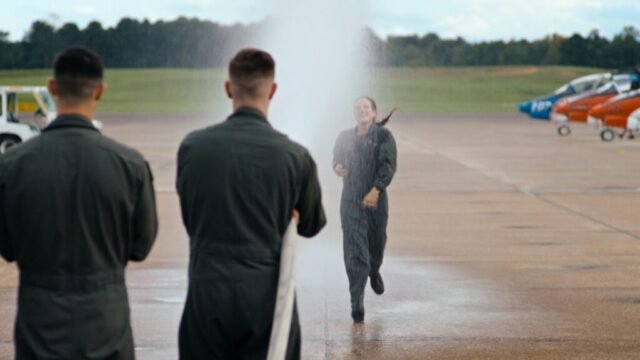It’s a constant correction that you’re making. It’s very much an eye scan. You have to look at certain things. Where is your leading indicator coming from? If you’re waiting for the airspeed to drop, it’s probably a little too late to tell that you’re under-inflated. You have to look at some of the other cues that you have available to you. That’s why there are so many different sensors, systems, and numbers. We teach them not to look at one number, but to look at a handful of numbers and extrapolate what that means for their energy state and the state of the airplane.
Ars Technica: All of the candidates you put forward were quite different in many ways, which is a good thing. As one instructor says in the episode, they can’t all be “Mavericks.” But are there any particular qualities that you find in the most successful candidates?
Juston Kuch : Individual personalities, whether they’re extroverted, introverted, quiet, they vary. But there’s a common thread running through them all: dedication to the mission, hard work, willingness to take the setbacks and failures on board and become better for the next evolution. That trait is with everyone I think makes it through successfully. I never see someone fail and just say, “Oh, I’m never going to make it. I’m going to quit and go home.” If they do, they don’t finish the program. So personalities vary, but the core motivations and attributes are there for all Naval Aviators.
Getting Their Wings
Her classmates cheer on the elated student to celebrate the successful completion of her training.
National Geographic
Captain Kutch presents successful students with his golden wings.
National Geographic
All the graduates are smiles.
National Geographic
Ready to take to the sky.
National Geographic
Ars Technica: I was particularly struck by the importance of resilience in successful candidates.
Juston Kuch : That’s probably one of the main components of our training curriculum. We want to stress the students. We want to challenge them. We want them to fail within a certain amount of time. We expect them to fail within a certain amount of time. We do it in an incredibly safe environment. There are multiple protocols in place so that no one is going to get hurt in this evolution of training. But we want them to experience it because it’s about learning and growing. If you fall down eight times, you’re going to get back up eight times.
It’s not that you’re going to get it right the first time. It’s that you’re going to keep working to get to the right answer or get to the right level of performance. So persistence is key, and that’s what combat is about to some extent. The enemy is going to do something that you don’t expect. There’s the potential for there to be harm or other challenges that the enemy is going to throw at you. What do you do from there? How do you pick yourself and your team up and keep moving forward?


















